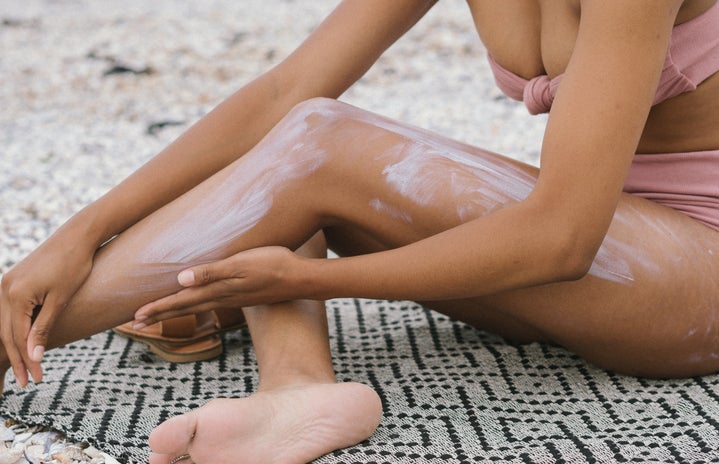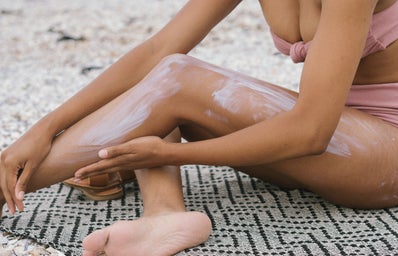Edited by: Tanmaya Ramprasad
Beauty might be subjective. But sun safety is not. From long-sleeved clothing to hats and sunblock, it is a lot easier said than done. While battling summer heat and style, long-sleeved clothing can be a nuisance only some are willing to put up with. Most people turn to sunblock. From tinted, to scented, to natural, sunblocks can have huge variations.
While UVA rays do not cause sunburns like UVB, UVA causes deep skin damage and results in earlier ageing and can lead to skin issues such as melanoma.
Natural sunblock refers to sunblocks whose active ingredients are titanium dioxide and/or zinc oxide that sits on top of the skin and deflect ultraviolet rays. Typically, these sunblocks will leave a white sheen.
Common ingredients in other sunblocks include oxybenzone, a derivative of benzophenone that absorbed UVA (https://pubchem.ncbi.nlm.nih.gov/compound/Oxybenzone). It is associated with coral reef toxicity and has been shown to increase coral’s susceptibility to bleaching, damage coral DNA, disrupt coral hormone processes and lead to deformities (https://coral.org/blog/sunscreen-and-corals/). Studies also show that oxybenzone can disrupt hormone regulation thus leading to toxicity.
Avobenzone also filters UVA, and octinoxate and homosalate filter UVB (information from safecosmetics.org). Like oxybenzone, octocrylene has been shown to accumulate in wildlife and cause DNA damage (Ruszkiewicz JA, Pinkas A, Ferrer B, Peres TV, Tsatsakis A, Aschner M. Neurotoxic effect of active ingredients in sunscreen products, a contemporary review. Toxicol Rep. 2017 May 27;4:245-259. DOI: 10.1016/j.toxrep.2017.05.006. PMID: 28959646; PMCID: PMC5615097).
Along with the active ingredients, sunblocks have many inactive ingredients contributing to stability, texture and water resistance. To further understand the various products on the market the EWG Skin Deep Database ranks the safety of products by the safety of every ingredient in that product and by price range.
In general, zinc oxide and cream/lotion overspray are generally the least toxic. But the complexity doesn’t end there. Many European countries have sunblocks that block more than double the UVA rays that even the highest American sunblock can block. Examples include Tinosorb S and Tinosorb M which block UVA. Another chemical is called Mexorxyl, which is now also in Canada and is able to turn UV into heat. (https://www.mcgill.ca/oss/article/cancer-controversial-science-cosmetics-environment-health-news/safe-sunscreens-no-safe-tans).
Despite the differences, all sunblocks are ranked by the SPF system. Whereas UPF measures the UV protection of clothing fabrics, SPF measures the UV protection of sunblocks. The SPF number tells you how long it will take for the sun to cause sunburn when using the product as directed compared to the amount of time to sunburn bare skin. The SPF system is a logarithmic trend and reaches a plateau. Thus 60 SPF is not double the protection of 30 SPF. SPF 30 will block 97% of rays, and SPF 50 will block 98% of rays, however, this means that SPF 30 is allowing 50% more rays into your skin compared to SPF50 (https://www.skincancer.org/blog/ask-the-expert-does-a-high-spf-protect-m…). That being said, the general recommended minimum SPF for sunblock is 30.
With summer coming up soon, no matter what you do, always remember to reapply every two afters, after a towel dry, and after sweating. Combining these sun safety measures will help you enjoy a bright, lovely summer day with minimal risk to your health!


